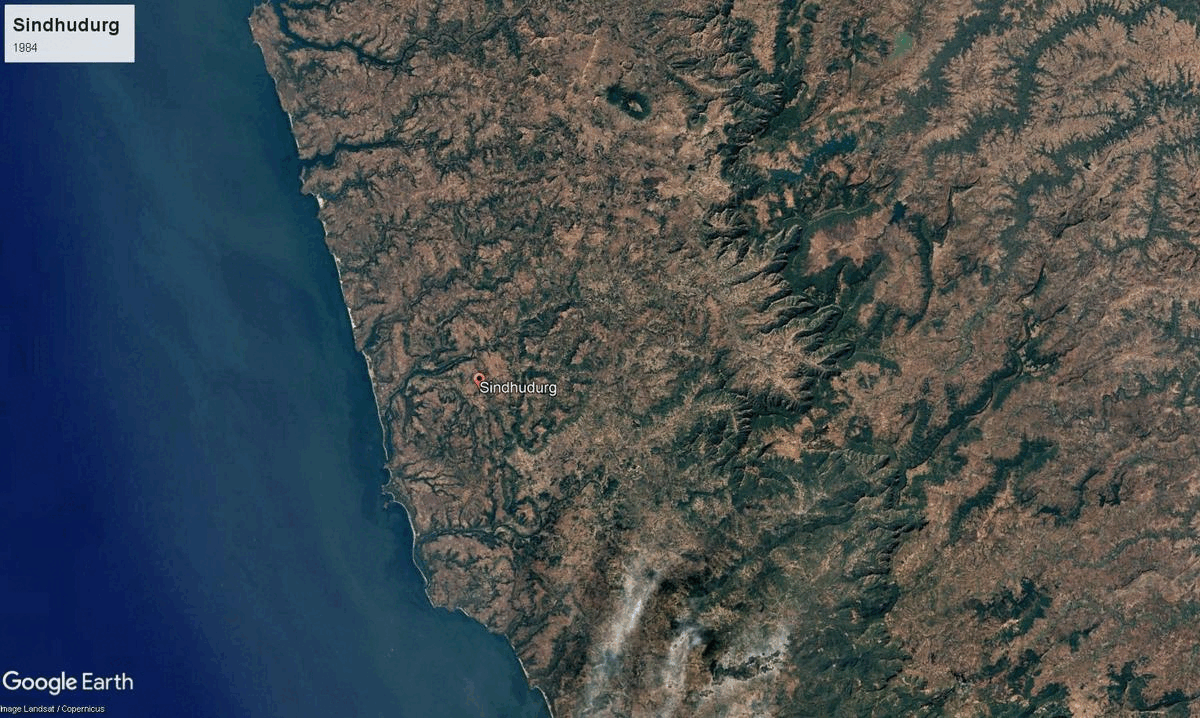Sindhudurg

5,207 sq. km
~9 lakh (2019)
1037 (2011)
~ ₹14,285 crore (2019)
~ ₹1.59 lakh (2019)
Sindhudurg, a coastal district in Maharashtra, was formed on 1 May 1981, after being separated from Ratnagiri district for better administrative efficiency. It consists of eight talukas: Devgad, Kankavli, Kudal, Malvan, Sawantwadi, Vengurla, Dodamarg, and Vaibhavwadi. The district is named after Sindhudurg Fort, built by Chhatrapati Shivaji Maharaj in the 17th century as a strategic naval base to protect the Konkan coast from foreign invasions. The name means "fort in the sea," highlighting its maritime and historical importance. Before the Marathas, the region was influenced by various dynasties, including the Mauryas, Satavahanas, Chalukyas, and the Bahmani Sultanate. The Portuguese, and later the British, also held influence over parts of Sindhudurg due to its coastal trade significance. According to the 2011 census, Marathi is the main language, while Konkani is also widely spoken.
Sindhudurg’s history is shaped by various dynasties that contributed to its architecture and culture. The district is home to Sindhudurg Fort, Vijaydurg Fort, and Devgad Fort. It is also home to the Rameshwar Mandir in Achara and Kunkeshwar Mandir near Devgad. Tarkarli Beach, known for scuba diving and water sports, is a major tourist attraction. The region is also known for its traditional folk arts like Dashavatar. Sindhudurg is a stronghold of Konkani and Malvani traditions, renowned for its folk arts (Dashavatari plays, Koli dances), honest-to-goodness cuisine (notably Malvani fish and coconut-rich delicacies), and legendary involvement in shipbuilding, salt-making, and small-scale trade. Additional temples like the Sateri at Vengurla and Vadkeshwar celebrate the area’s strong devotional roots, while annual fairs (jatra) and monsoon festivals highlight a lifestyle closely tied to the rhythms of the sea. The district also preserves unique maritime customs and is famed for vibrant Chaitra and Dussehra festivities.
Sindhudurg’s geography features lush greenery, rivers, and rolling hills, with the Arabian Sea shaping its climate and economy. The district has a tropical monsoon climate, with heavy rainfall supporting agriculture. Many streams, laterite cliffs, and green ghats support high biodiversity, including mangroves, endemic flora, and rich wildlife sanctuaries. Indeed, Sindhudurg features spectacular natural diversity.
Agriculture and fishing are the backbone of the district’s economy while it is also famous for its Alphonso mangoes, cashew nuts, and coconut cultivation. Rice is the staple crop, while fishing is a major source of income. The fisheries sector, supported by a 121 km coastline, adds to the district economy. Major fishing centers include Vijaydurg, Devgad, Nivati, Achara, Malvan, Sarjekot, Vengurla, and Shiroda. Meanwhile, tourism is growing steadily, with forts and beaches attracting visitors. he region also has a legacy in coir, saltpans, and handloom weaving. The district’s banking sector, including nationalized, cooperative, and rural banks, plays an important role in supporting local businesses and financial growth. Due to deliberate restrictions on heavy industry, the area retains its green profile and healthy ecosystems, with small town markets and agriculture as the backbone of local livelihoods.
